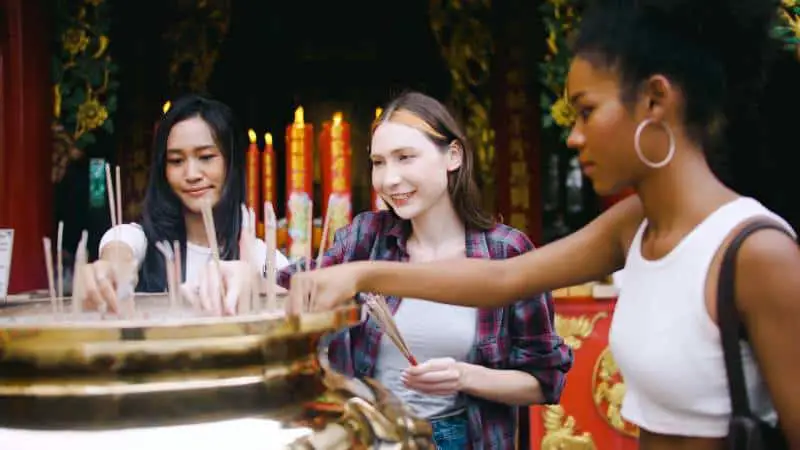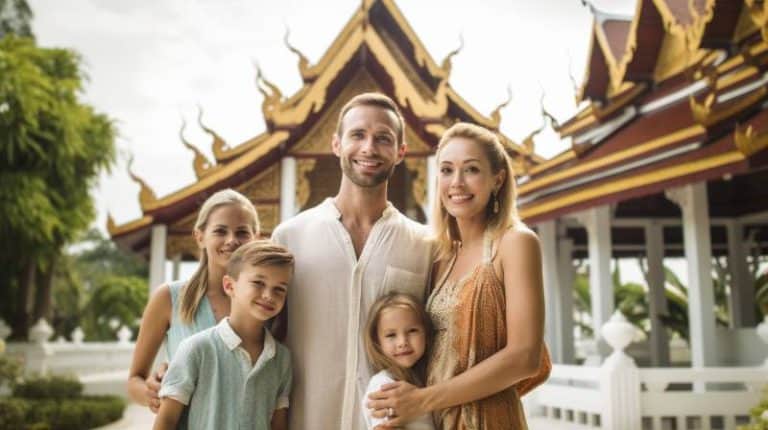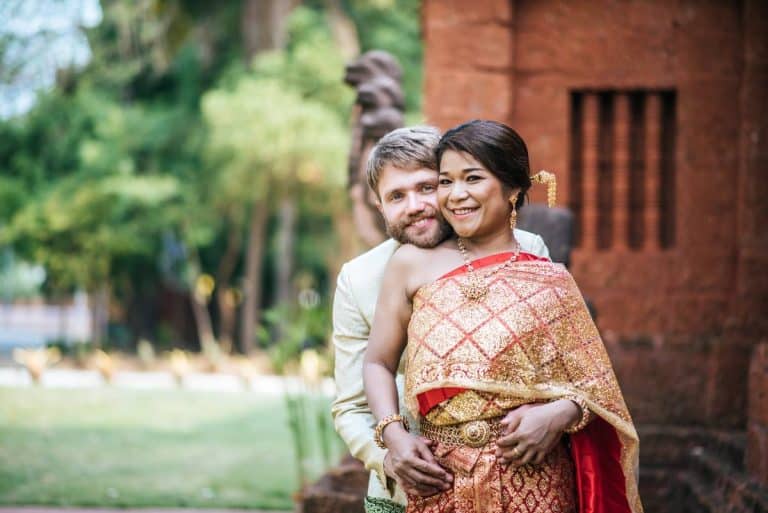A Journey Through Thai Superstitions and Beliefs
Have you ever wondered about the mysterious customs of the Thai people? Have you heard stories about their superstitions and ancient beliefs? This blog post will explore the interesting history behind some of Thailand’s most fascinating cultural practices. From age-old legends to recent urban myths, we’ll discuss a variety of Thai Superstitions and Beliefs that still shape today’s society in this culturally rich country.
Learn how these beliefs have been passed down for centuries and discover some new ideas along the way! We invite you to join us on an unexpected journey as we uncover the mystery surrounding popular Thai superstitions and traditions.
Thailand’s religious landscape comprises Buddhism, Animism, and Brahmanism (also known as Hinduism). These belief systems encompass the veneration of spirits and deities, some of whom possess merit or good karma. These foundational components form the bedrock of Thai folk religion.
Key Takeaways
- Thai superstitions are deeply ingrained in the culture, impacting everything from daily routines to special occasions, and reflect a rich blend of religious and ancient beliefs.
- While many of these superstitions might seem unusual to outsiders, they offer an authentic glimpse into the Thai worldview and the country’s spiritual heritage.
- Even as modernity reshapes Thailand, these age-old beliefs remain relevant, guiding and influencing decisions, behaviors, and perspectives of both the young and the old.
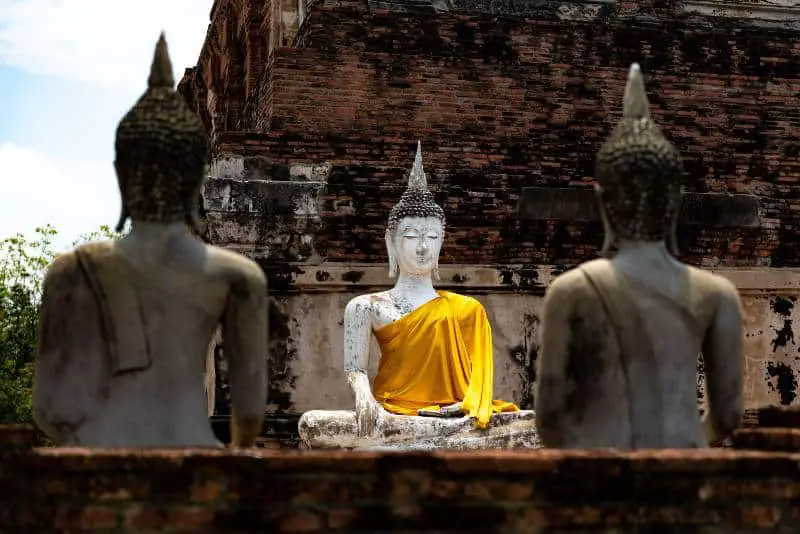
Historical Background
Thailand, a land of lush landscapes, vibrant traditions, and intricate histories, has long been a melting pot of diverse cultures and religions. This tapestry of influences is beautifully reflected in its many superstitions, each with roots that reach deep into the past. Let’s embark on a journey to uncover the ancient origins of Thai superstitions and discover how Buddhism, animism, and other religions have left their indelible marks on these beliefs.
Animism: The Earliest Spiritual Belief
Before we explore the vast realm of Thai superstitions, it’s essential to understand animism, arguably the oldest form of spiritual belief in Thailand. Animism revolves around the idea that everything in nature – be it a tree, river, mountain, or even a rock – possesses a spirit or soul. In the verdant groves and dense jungles of ancient Thailand, our ancestors would often witness the rustling of leaves or the murmuring of streams and, in search of explanations, attribute these phenomena to the presence of spirits.
For instance, the widespread Thai belief in “Nang Tani”, the ghostly apparition of a woman appearing under banana trees during full moon nights, can be traced back to animistic roots. Local folklore advises against eating bananas during a full moon, lest one offend this spirit and invite misfortune.
Buddhism: A Powerful Layer of Belief
The introduction of Buddhism in Thailand around the 3rd century BCE added another rich layer to the nation’s spiritual tapestry. While Buddhism, with its principles of karma, rebirth, and enlightenment, encourages rational thought, it’s fascinating how it coexisted and often merged with local animistic beliefs. Take, for example, the Thai practice of offering food and flowers to Buddhist monks. While it’s primarily a Buddhist ritual to earn merit, it also incorporates the animistic idea of appeasing local spirits by making similar offerings at spirit houses.
Moreover, the reverence for sacred trees in Thai culture is a harmonious blend of Buddhism and animism. “Yaksha”, the guardian spirits of these trees, are often visualized as imposing, sometimes terrifying figures, which can be seen adorning the gates of many Buddhist temples. The intersection of these two belief systems underscores the fluidity of Thai spirituality, where traditions seamlessly merge, creating a unique spiritual identity.
Read here to dive deeper into the fascinating world of Buddhism in Thailand: More Than Just Religion. Discover the rich history, intricate rituals, and profound teachings that shape the spiritual landscape of this enchanting country. Immerse yourself in the vibrant traditions and explore the profound impact Buddhism has on the lives of millions in Thailand.
Influences of Hinduism, Brahmanism, and Other Religions
While animism and Buddhism are primary drivers of Thai superstitions, we cannot overlook the subtle but distinct influence of Hinduism and Brahmanism. The royal courts of ancient Thailand often employed Brahmin priests for specific ceremonies, blending elements of Hindu cosmology into the Thai cultural fabric.
For instance, the famous Erawan Shrine in Bangkok, which houses a statue of Brahma (or “Phra Phrom” in Thai), highlights this synthesis. Thais, irrespective of their primary religious beliefs, often pay their respects here, making offerings for good luck and protection – an integration of Brahmanistic ritual with local Thai superstitions.
Additionally, Chinese folklore and beliefs, brought by traders and settlers, have also found a home in Thai culture. The celebration of the Chinese Lunar New Year and associated superstitions, such as dragon dances to ward off evil spirits, are testaments to this integration.
Common Thai Superstitions
Venture into the heart of Thailand, and you’ll discover a land not just of scenic beauty and rich history, but also a realm where the ethereal and the everyday intertwine. Thai superstitions offer a glimpse into this world where ancient beliefs play a profound role in shaping daily conduct and attitudes. Let’s unravel some of these captivating beliefs.
Spirits and Ghosts: Echoes from the Otherworld
Thailand is home to a myriad of spirits and ghosts, known collectively as “Phi.” While Western ghosts might be confined to old mansions and graveyards, Thai spirits can reside just about anywhere – from forests to houses, and even mundane objects.
- Nang Tani: One of the most famous among these is “Nang Tani”, the green-clad spirit of a woman who appears near banana trees on full moon nights. Her tales are often cautionary, warning especially men against the perils of deceit. Legend has it that men who’ve been unfaithful or deceitful may find themselves ensnared by her enchanting yet potentially deadly allure.
Taboos: Do’s and Don’ts Rooted in Respect
- Head Touching: In Thai culture, the head is considered the most sacred part of the body, a repository of the soul or spirit. Touching someone’s head, especially without permission, is viewed as a grave offense. It’s akin to invading someone’s personal sanctuary. If you ever happen to accidentally touch a Thai person’s head, a sincere apology is the best way to mend fences.
- Whistling at Night: While whistling might be a casual act in many cultures, doing so at night in Thailand is believed to invite unwanted spirits or “Phi” into one’s vicinity. Some Thais believe that this high-pitched sound can beckon malevolent forces, turning an innocent pastime into a perilous invitation.
Numbers: The Game of Luck and Fate
Like many cultures worldwide, Thais too have their favorites when it comes to numbers.
- Lucky Number: The number 9, pronounced as “Gao”, resonates with the word for “progress” in Thai. This makes it an especially auspicious number, sought after for vehicle registrations, phone numbers, and even wedding dates.
- Unlucky Numbers: Conversely, the number 6, pronounced “Hok”, can sometimes be associated with the word for “to depart”, making it less favored.
Tattoos for Protection: The Mystical Sak Yant
In the West, tattoos are often an expression of individuality or a memento of significant life events. In Thailand, however, tattoos can be so much more. The traditional “Sak Yant” tattoos, etched by monks using a bamboo stick, are believed to offer protection and bestow blessings upon the wearer.
- Each “Sak Yant” design has a specific meaning, with geometric patterns and ancient Khmer script weaving tales of power, protection, bad luck, and charisma. One of the most famous designs is the “Hah Taew” or the Five Sacred Lines, each line dedicated to a specific blessing or protection.
To receive a “Sak Yant”, isn’t just about enduring the physical pain; it’s a spiritual commitment. The bearer must adhere to a set of moral precepts to maintain the tattoo’s potency, making it a fusion of art, spirituality, and personal discipline.
Special Occasions and Beliefs
Thailand, with its rich tapestry of history and culture, celebrates various festivals and practices that reflect the deeply rooted beliefs of its people. Some of these traditions are a blend of ancient animistic beliefs, Buddhist practices, and regional customs, creating an intricate yet harmonious fusion. Let’s dive into a few such special occasions and the beliefs associated with them.
Songkran Festival: The Thai New Year
Origin and Significance: The Songkran festival, typically celebrated from 13th to 15th April, marks the traditional Thai New Year. Derived from the Sanskrit word ‘Sankranti’, which denotes the transition of the sun from one zodiac sign to another, Songkran signifies the sun’s move into Aries.
Main Customs: The festival is best known for its grand water fights. While this might seem like pure fun to an outsider, it’s steeped in symbolic meaning. Water is regarded as a medium to wash away misfortunes from the previous year, and the splashing is a gesture of wishing someone blessings and a fresh start. In more traditional settings, younger people gently pour water over their elders’ hands, seeking blessings. Besides the water rituals, there are also temple visits, where Thais offer food to monks and engage in the symbolic act of releasing fish and birds back into nature, symbolizing liberation and rebirth.
Ghost Festival (Phi Ta Khon)
Origin and Significance: Also known as the “Mask Festival,” Phi Ta Khon is an otherworldly celebration predominantly held in the Dan Sai district of Loei province in Northeastern Thailand. The exact origins are somewhat shrouded in mystery, but it’s commonly linked to a Buddhist Jataka tale where the Buddha, in one of his past lives, made such a remarkable return to his kingdom that a raucous party began.
Main Customs: The most striking feature of this festival is the vibrantly painted masks made from carved coconut trees, adorned with sticky rice steamers that make up the headdress. Participants, wearing these grotesque masks and patchwork clothing, parade and dance through the streets, creating a lively spectacle. The noisiness and jest of the event are believed to awaken the spirits, inviting them to join the fun. Beyond the celebration, there’s an underlying spiritual aspect, with Buddhists listening to thirteen continuous sermons at the local temple.
Tree Spirits and the Tying of Colored Ribbons
Origin and Significance: Delving into Thailand’s animistic roots, trees, especially large and ancient ones, are believed to be the dwelling places of spirits known as ‘Ton Mai Yak’. These spirits are revered, and harming their abode, the trees, could bring about misfortune.
Main Customs: To show respect and seek protection from these spirits, locals tie colorful ribbons or ‘sai sin’ (sacred threads) around the trunks of significant trees. These ribbons act as identifiers of sacred trees and serve as a symbolic offering to the residing spirit. They’re not just pretty decorations; they’re vibrant reminders of a pact between humans and the natural world, emphasizing harmony, respect, and coexistence.
Beliefs in Daily Life
While grand festivals and ceremonies are a striking facet of Thai culture, the true essence of the country’s spiritual richness is woven into the fabric of everyday life. Many traditional beliefs still hold sway and influence how Thais interact with the world around them, even amidst the hustle and bustle of modernity. Let’s explore some of these practices and the beliefs that underpin them.
Spirit Houses: Homesteads for Ethereal Residents
Almost every Thai home or business establishment will have a little shrine or structure known as the ‘San Phra Phum’ or ‘Spirit House’. These ornate structures, often elevated on pillars, are not for the living but for resident spirits.
Origin and Significance: It’s believed that every piece of land has spirits residing on it. When humans construct buildings or homes, these spirits are displaced. To appease and provide them shelter, Thais build spirit houses, ensuring harmony between the living and the spirits.
Main Customs: These spirit houses aren’t just ornamental; they’re treated with respect and care. Offerings like fresh flowers, incense, food, and drinks are made to keep the spirits contented. Some also believe that keeping spirits appeased brings prosperity, health, and protection from misfortunes.
Offering Food to Ghosts: A Gesture of Respect and Remembrance
Thais believe in a multitude of spirits and ghosts, and among them, ancestral spirits hold a special place. It’s a common practice to offer food to these spirits, especially during certain festivals or on anniversaries of a loved one’s passing.
Origin and Significance: This practice is rooted in the belief that the spiritual realm intersects with our physical one. By offering food, Thais not only honor their ancestors but also ensure that their spirits are well-fed and content in the afterlife.
Main Customs: A typical food offering setup might include rice, fruits, and traditional Thai dishes. Candles and incense are lit to invite spirits to partake in the meal. After a certain period, the food is shared among family members or sometimes given to those in need.
3. Avoiding Certain Actions on Particular Days: Aligning with Auspicious Timings
In Thai culture, certain days are deemed auspicious or inauspicious for specific activities based on traditional astrological beliefs.
Origin and Significance: Ancient Thai astrological systems, influenced by Indian and Chinese astrology, prescribe optimal times for various actions. Adhering to these timings is believed to bring about success while neglecting them could invite misfortune.
Main Customs: For example, many Thais consult monks or astrological calendars before setting wedding dates, starting a business, or even getting a haircut! Tuesdays, for instance, might be viewed as inauspicious for haircuts by some. While urban areas and younger generations might not adhere strictly to these beliefs, they are still prevalent, especially in rural regions.
Modern Interpretations and Practices
As Thailand strides confidently into the 21st century, the tugs and pulls between tradition and modernity become ever more apparent. This dynamic interplay shapes how younger generations perceive age-old superstitions and how commercial interests meld with cultural heritage. Here’s a glimpse into these evolving dimensions:
Younger Generations and Traditional Beliefs
Perception and Adaptation: For many young Thais, the dense tapestry of spirits, taboos, and rituals is a cherished part of their cultural heritage, even if they don’t necessarily adhere to all the beliefs. Urbanization, globalization, and exposure to diverse worldviews have made many younger Thais more questioning and selective about the superstitions they choose to follow.
For instance, while a young Thai individuals might not strictly avoid haircuts on Tuesdays, they may still participate enthusiastically in Songkran, both for its cultural significance and the sheer fun of it.
Balancing Respect and Rationality: Even if personal beliefs have evolved, there remains a strong sentiment of respect towards these traditions, primarily because they hold significance for their elders. Participating in rituals or adhering to certain customs becomes less about the superstition itself and more about family, community, and continuity.
Commercialization and Tourism
From Spiritual to Spectacular: Tourism is a significant industry in Thailand, and the rich cultural and spiritual traditions of the country offer unique experiences for visitors. This has led to certain festivals, originally rooted in deep spiritual beliefs, becoming major tourist attractions. Songkran, for instance, has evolved from a serene water blessing ceremony to a massive water fight that attracts tourists from around the world.
Expanding Accessibility: On the positive side, the commercial interest in these traditions has ensured their survival and has even introduced them to a global audience. Festivals like Phi Ta Khon, once limited to specific regions, now enjoy national and international recognition, thanks to tourism and media coverage.
Balancing Authenticity and Appeal: The challenge here lies in striking a balance between commercial appeal and cultural authenticity. While it’s heartening to see tourists partaking in Thai traditions, there’s also a risk of these traditions being diluted or misinterpreted. Many local communities and organizations strive to ensure that the essence of these practices isn’t lost amidst the spectacle.
Merchandising Spirituality: Beyond festivals, elements of Thai superstition have found their way into merchandise. Spirit houses, for example, might be sold as miniatures or souvenirs. Similarly, Sak Yant tattoos, once a deeply spiritual commitment, are now sought after by many international tourists for their aesthetic appeal, often without a deep understanding of their significance.
Bangkok’s Fortune Teller
Strolling through the bustling streets of Bangkok, you might find your path intersected by tables adorned with enigmatic Tarot cards, intricate astrological charts, and other mystical tools, all laid out under the watchful eyes of a local fortune teller. To the casual traveler, this tableau might seem like an exotic slice of Southeast Asian charm. However, to the residents of this region, these prophecies carry significant weight and are often held in high regard.
In the Thai language, the term for a fortune teller is ‘mor doo’, which elegantly translates to “doctors that see.” Their clientele is diverse, ranging from everyday folk seeking guidance on love or work to high-ranking government officials and even members of the royal family consulting on matters of state, romantic endeavors, travel trajectories, and pivotal life decisions.
The Authenticity Behind the Mor Doo: Thai Astrological Association
At first glance, some of these fortune tellers might come across as crafty salespeople, spinning tales for a quick buck. But don’t be too hasty in your judgment. A significant portion of them are accredited members of the revered Thai Astrological Association. This esteemed institution offers intensive training to budding seers, ensuring they’re well-versed in interpreting star charts, decoding the lines on one’s palm, and drawing insights from Tarot cards. Embarking on this three-month course requires a considerable investment, approximately 10,000 baht, which is a hefty sum for many Thais. This commitment underscores the seriousness with which they approach this age-old craft.
Navigating the Choices: A Spectrum of Fortunes
The beauty of seeking guidance from a mor doo is that there’s a spectrum of services tailored to every budget. The most accessible option, a mere 100 baht, will get you a card reading that provides a basic outlook, be it of good fortune or potential hurdles.
While these readings come with a modest certainty rating of five percent, they’re a popular choice among many. For those willing to delve deeper and invest a bit more, there’s the 300 baht astrological reading, touted to offer a whopping 100 percent accuracy.
These comprehensive sessions delve into an individual’s life journey, psychological nuances, and heart desires. Interestingly, a recurring theme among patrons’ queries centers around the fidelity of their partners and the tantalizing prospect of hitting the lottery jackpot.
A Traveler’s Nugget of Wisdom
Here’s a friendly tip for those bitten by the travel bug: Dipping your toes into the world of fortune-telling is an enchanting way to immerse yourself in Southeast Asian culture. For a genuine mor doo experience, head towards the Thai Astrological Foundation.
You’ll find them strategically positioned across from Bangkapi Mall and also near the southern precincts of the mesmerizing Sanam Luang Royal Field, which is in proximity to the iconic Grand Palace. And while you’re on this journey of discovery, don’t forget to explore the serene temples dotting the cityscape or perhaps indulge in getting a finely-tailored suit — after all, Bangkok beckons with myriad treasures!
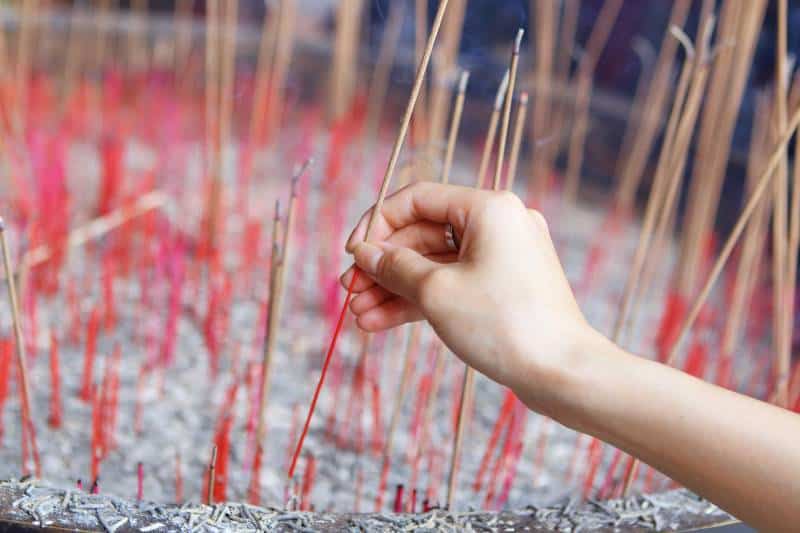
Thai Superstitions and Beliefs FAQs
What is the significance of spirit houses in Thailand?
The Spirit House serves as a sanctuary for celestial beings, who would otherwise dwell in the heavens, caves, trees, cliffs, waterfalls, or other natural abodes. Its purpose is to provide them with shelter, ensuring their divine presence is honored and cherished.
Why is touching someone’s head considered disrespectful?
In Thailand, the head is regarded as sacred and the purest part of the body. Therefore, it is considered offensive to touch someone’s head or hair. If you unintentionally make this mistake, apologize promptly, and you will find that most Thais are quick to forgive.
How do modern Thais view ancient superstitions?
While urban areas and younger generations might not adhere strictly to ancient superstitions, they are still prevalent in rural regions. For many young Thais, the dense tapestry of spirits, taboos, and rituals is a cherished part of their cultural heritage, even if they don’t necessarily adhere to all the Thai beliefs.
Are there specific superstitions related to Thai weddings?
Yes, it is customary for Thai couples to seek advice from monks or astrological calendars before setting a wedding date. It is also believed that certain days are auspicious or inauspicious for specific activities, and many Thais take this into account when planning their nuptials.
How do Thai superstitions influence local business decisions?
Thais often consult monks or astrological calendars before starting a business, to determine the most auspicious time for doing so. It is also believed that certain days are better than others for specific activities, such as signing documents. Thus, many people in Thailand factor these beliefs into their business decisions.
Conclusion
Our exploration of Thai superstitions and beliefs has been a journey that reveals the country’s enthralling culture, long history, and spiritual customs. By understanding these cultural norms and traditional activities, travelers will be better equipped to experience life in Thailand effectively and respectfully.
A deeper knowledge of each country’s symbols of reverence should serve as a reminder for us all to appreciate the diversity of cultures around the world and amplify their unique beauty. We hope this post has shed some light on fascinating and unfamiliar beliefs so that one day we can continue the conversation in person!
If you’re interested in learning more about Thailand’s community, culture, or way of life, please subscribe to our newsletter or reach out with any questions or comments. We wish you all the best on your journey of discovery.
